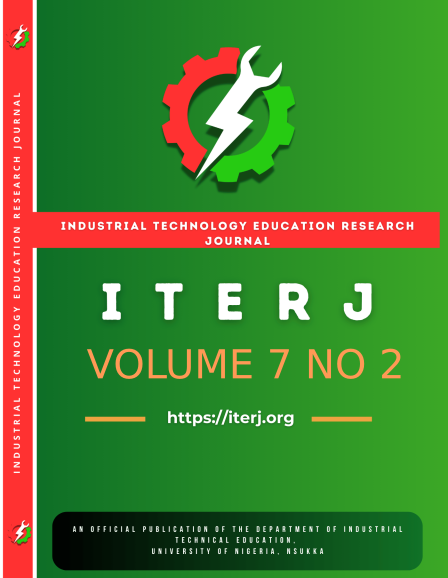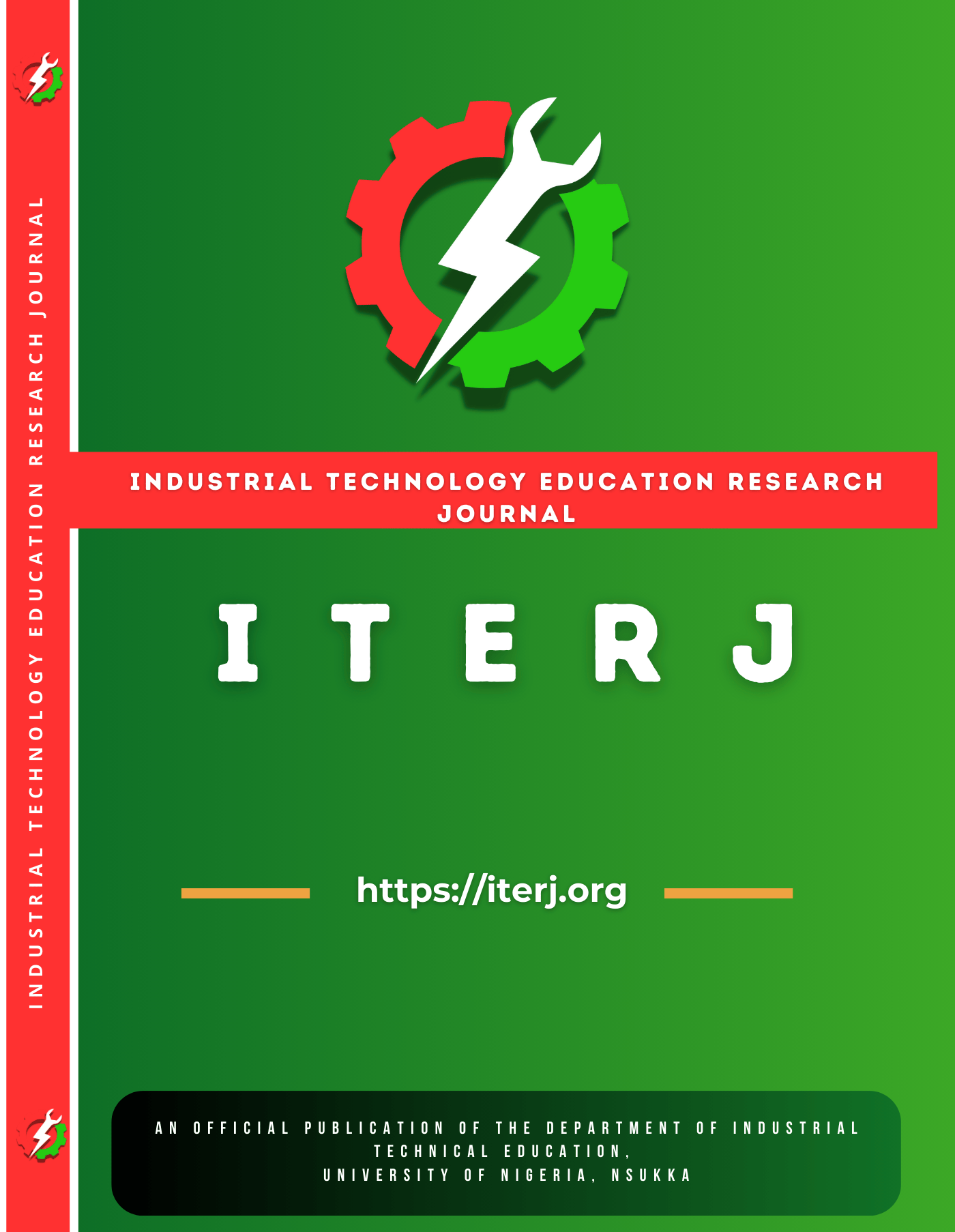Occupational Creativity as a Predictor of Self-Efficacy, Self-Belief and Productivity of Metalworkers in Imo State
Keywords:
Occupational Creativity, Self-Efficacy, Self-Belief , Productivity MetalworkersAbstract
The study examines the relationship between occupational creativity and self-efficacy, self-belief, and productivity in metalworkers in Imo State. Pearson product moment was used to correlate. The study samples 42 metalwork workers from registerd metal related industries. A reliability coefficient of 0.79 was reaslized. The results show a positive correlation between occupational creativity and self-efficacy, self-belief, and productivity of metalwork workers. The findings suggest that occupational creativity plays a crucial role in enhancing self-efficacy, self-belief, and productivity among metalworkers. This study has implications for the development of interventions that promote occupational creativity among metalworkers, which can lead to improved self-efficacy, self-belief, and productivity in the workplace. Recommendetions and further research is needed to explore the specific mechanisms through which occupational creativity influences these outcomes. Overall, this study highlights the importance of occupational creativity in the development of a productive workforce and calls for further attention to be paid to this area in future research and practice.








